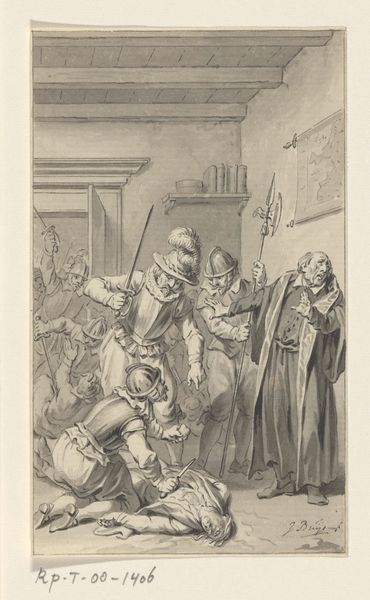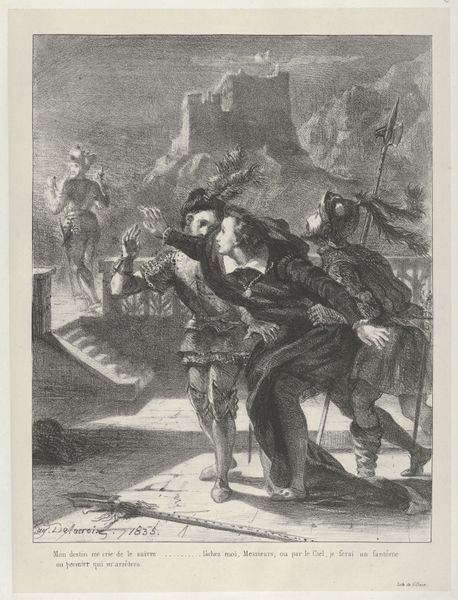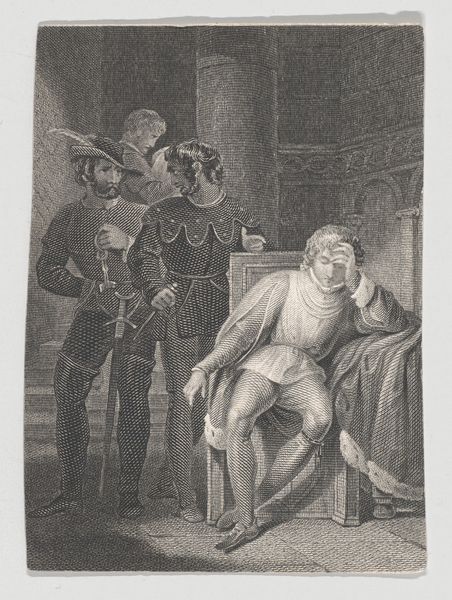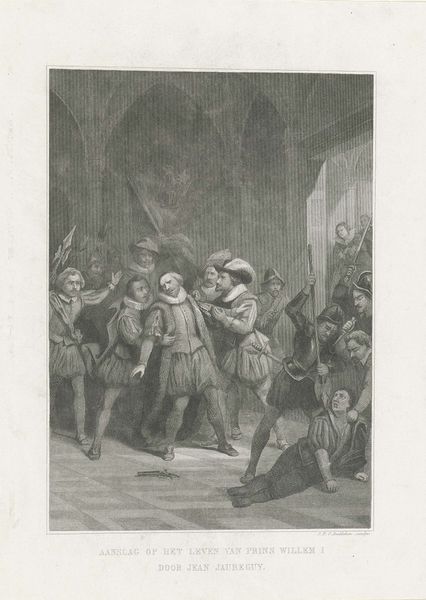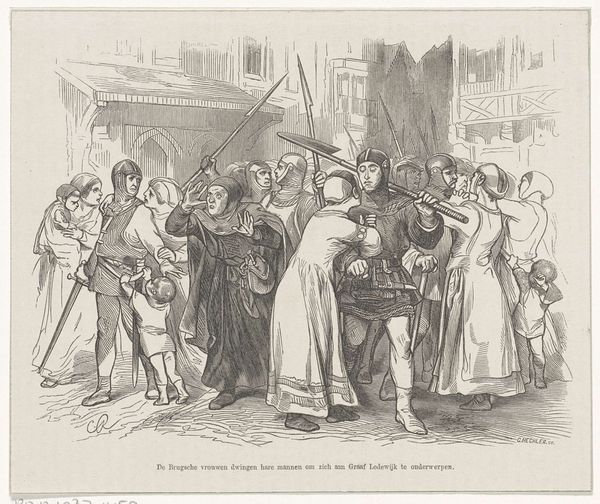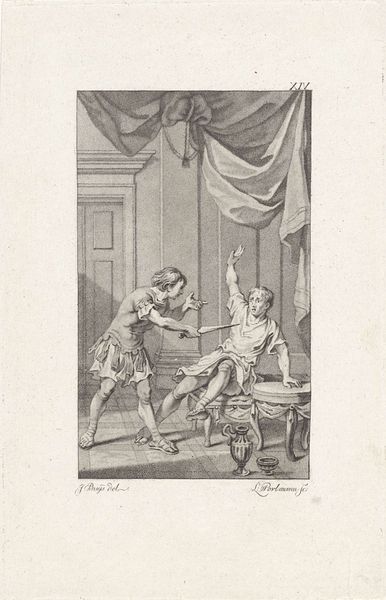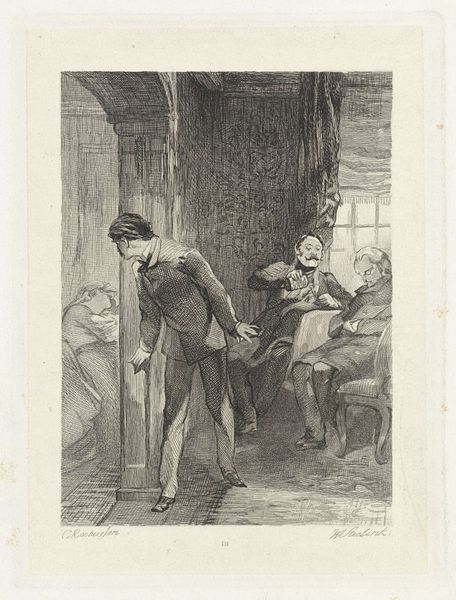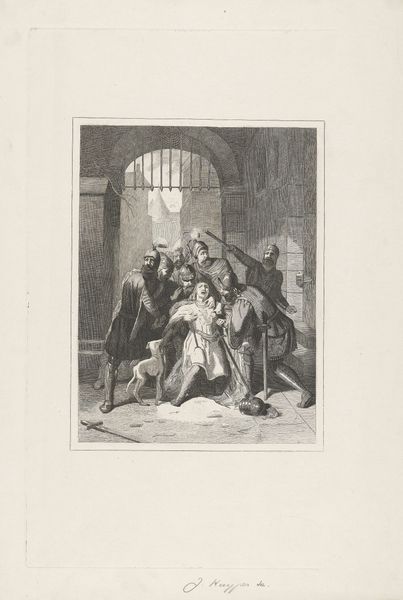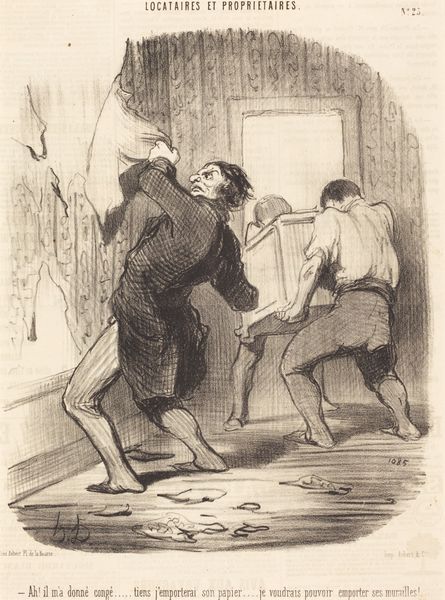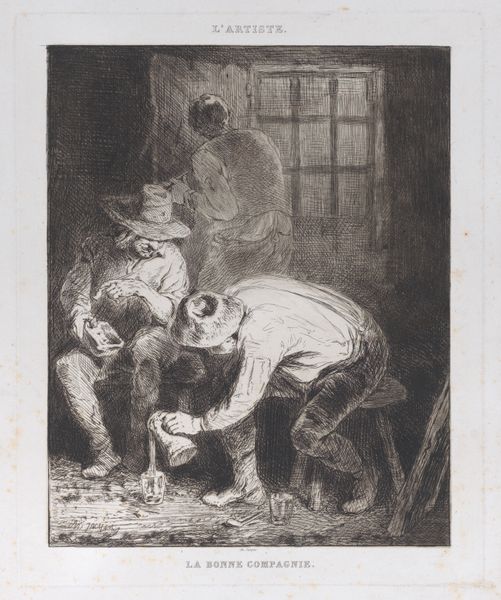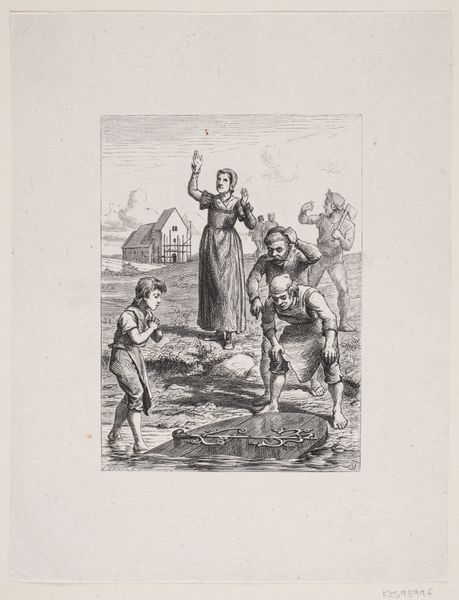
drawing, print, graphite, engraving
#
drawing
#
narrative-art
# print
#
figuration
#
romanticism
#
men
#
line
#
graphite
#
history-painting
#
graphite
#
engraving
Dimensions: Image: 11 3/8 x 7 15/16 in. (28.9 x 20.1 cm) Sheet: 12 3/4 x 7 15/16 in. (32.4 x 20.1 cm)
Copyright: Public Domain
Eugène Delacroix made this lithograph of The Death of Hamlet in 1843. Lithography is a printmaking process that relies on the chemical repulsion of oil and water. The artist draws an image with a greasy crayon on a flat stone or metal plate, then applies ink which adheres only to the greasy areas. The resulting print translates Delacroix’s painterly style into a more reproducible medium, but still requires a high degree of skill. Note the dramatic lighting and swirling composition, which create a sense of theatrical drama. The use of lithography allowed for the wider dissemination of Delacroix's vision, connecting it to the rise of a print culture. Consider the labor involved, from the quarrying of the lithographic stone to the artist’s hand and the printer's expertise. Printmaking in the 19th century was central to the growth of a mass audience for art, and changed its economic structure entirely. By focusing on materials and making, we can appreciate the social and cultural forces at play in even a seemingly straightforward image.
Comments
No comments
Be the first to comment and join the conversation on the ultimate creative platform.

